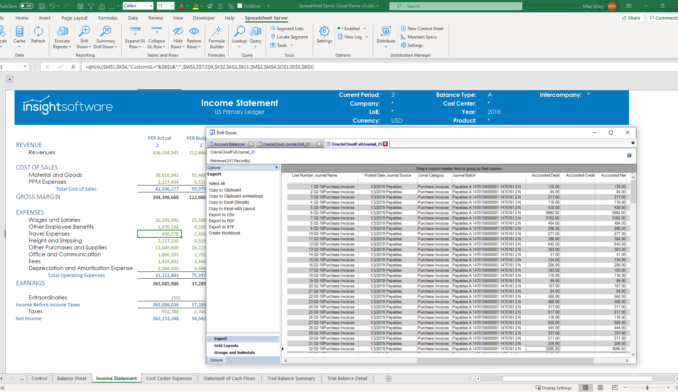The 5-Step Guide to Effective Financial Storytelling

Financial storytelling involves using in-depth financial data and advanced financial reporting tools to build a narrative around financial performance. It aims to help executives and anyone invested in finance understand how things are going and where they’re headed.
The Evolution of the CFO into the Chief Data Storyteller
View Whitepaper NowIt’s not a new concept; companies have always looked to the past and anticipated the future. What distinguishes today’s financial storytelling, though, is the ability to go beyond simple spreadsheets and shallow explanations to build narratives as engaging and instructive as that name would imply. That’s an exciting prospect, but also a complex challenge to turn data into something engaging and relevant.
For the best results, follow these steps:
- Understand Your Audience – Before doing anything else, identify to whom you’re telling the story. Different audiences have different needs (executives versus department heads, for example). Those needs dictate what kinds of information the story includes and how it’s formatted. Every story either speaks to its audience or falls on deaf ears, so it’s vital to understand what that audience needs to hear (both the obvious and the unexpected) before taking any other steps.
- Gather Anything Relevant – As financial storytellers, your goal is to turn dense, impenetrable financial data into something decision-makers can actually use. That requires an abundance of information on matters related to both finance and operations. This step is the most involved on the list because storytellers must collect data from disconnected and disparate sources, requiring time and labor-intensive effort. However, you must be thorough; otherwise, your narrative reporting risks omitting important details and pushing unsubstantiated conclusions.
- Identify Key Metrics – The best stories are clear and concise. For financial storytelling, that means focusing on a limited number of metrics to build the narrative and support the conclusion. Less is more, and it’s possible to build illuminating stories out of a deep dive into just one or two metrics like the current ratio or working capital. For your own sake and the sake of your audience, resist the urge to overstuff narratives with irrelevant metrics.
- Ace the Analysis – For financial storytelling to have any value at all, the analysis it offers must be free of errors and biases. You need to ensure that you’re working with the most complete, up-to-date, and accurate information available. Just as important, you must craft your narrative from what the data tells you instead of what you want it to say. Ideally, you have tools at your disposal that expedite and automate more of the analysis so that quality and objectivity become givens.
- Prioritize Presentation – Financial storytelling relies on a range of design and display tools. In addition to spreadsheets, it incorporates data visualizations, sections of written explanation, and strategically highlighted information. Each piece contributes to a whole that guides the audience through the story, explains and validates each point, and arrives at a set of clear takeaways. Bad presentation can sink an otherwise compelling and important story, so this step can’t be neglected. Ideally, the previous steps take less time so that you can focus on building the story itself.
More and more, financial storytelling is the primary purpose of the F&A department. Done well, storytelling helps companies avoid repeating their mistakes and start exploring what really drives success and failure. When companies understand their own financial story, they’re best equipped to write the next chapter themselves.
To learn more about how to tell your financial story in a few easy steps, download the whitepaper “The Evolution of the CFO into the Chief Data Storyteller” today.

_1080x.jpg)





